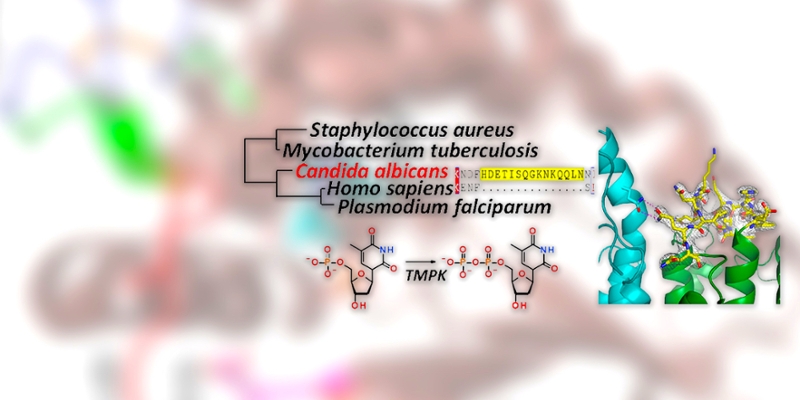A Promising New Target for Antifungal Drug Development

Thymidylate Kinases (TMPK) are solely responsible for converting dTMP to dTDP, an essential intermediate for DNA replication and repair. TMPKs are thus an attractive drug target and inhibitors have been designed against TMPKs from human (for cancer treatment), M. tuberculosis (TB treatment) and P. falciparum (malaria treatment). In addition, human TMPK is involved in the activation of anti-HIV pro-drug AZT, converting the monophosphate form (AZTMP) to the diphosphate (AZTDP).
Recent work published in Biochemistry by Kaustubh Sinha, research associate, and Gordon Rule, professor of biological sciences, explores the structure and kinetic characteristics of the TMPKs from many different organisms. Of high interest to the Rule lab is the TMPK from the fungal pathogen, Candida albicans. This pathogen can form biofilms and is responsible for most of the fungal infections related to medical implants and catheter lines. Research focusing on TMPK inhibitors with antifungal properties has not been pursued until now.
A unique feature of CaTMPK is the presence of a 15-residue loop (Ca-loop) between two helices of the enzyme. The X-ray derived structure shows that this loop is well structured and after performing several biochemical experiments, the Rule lab believes that it regulates the enzymatic activity of CaTMPK. The corresponding loop is much shorter in the human TMPK and it may be possible to exploit this structural difference to make compounds that only inhibit the enzyme from C. albicans, and not the human enzyme.
The Rule lab also studied the enzymatic activity of CaTMPK with different substrates using a novel NMR-based activity assay. Compared to the human enzyme, CaTMPK is more active against dTMP and AZTMP. Unlike the human enzyme, CaTMPK also exhibits activity with dGMP.
The functional and structural differences between the CaTMPK and the human enzyme suggest that thymidylate kinase is a promising target for the development of new antifungal drugs. Also, the lessons learnt from the CaTMPK enzyme may be applied towards designing mutants of the human TMPK which are better activators of AZT which would be useful in gene therapy.
Sinha K, Rule GS. The Structure of Thymidylate Kinase from Candida albicans Reveals a Unique Structural Element. Biochemistry. 2017 Aug 22;56(33):4360-4370. doi: 10.1021/acs.biochem.7b00498. Epub 2017 Aug 9. PMID: 28742342


